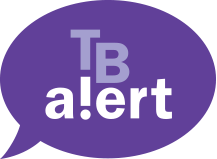Multidrug-resistant TB (MDR-TB) and extensively drug-resistant TB (XDR-TB) are major global health threats. WHO estimates that 480,000 people developed MDR-TB in 2015, but only 52% of cases were identified and treated appropriately.
How does drug-resistant TB develop?
Drug-resistant forms of TB can develop if treatment is incorrect or incomplete. This can happen for several reasons. Because treatment for TB takes six months and can have difficult side effects, people may be tempted to stop taking their medication before they have completed treatment, particularly if they are starting to feel better. They may be given the incorrect treatment or may fear the stigma of having TB. People with infectious drug-resistant TB can then also pass this drug-resistant strain on to others.
Treatment
The standard six-month treatment for TB is not effective for people with MDR-TB. Instead, they must be treated with drugs that are less effective, more toxic and much more costly – typically more than £50,000 per patient in the UK. Treatment can take up to two years, cure rates are lower and fatalities are higher.
In poorer countries, it can be very difficult to treat MDR-TB. Treatment options are limited and expensive, the best medicines may not be available, and patients can experience many bad side effects from the drugs.
Treatment is even more complicated for people with XDR-TB, and it is estimated that globally around 70% of patients die within a month of diagnosis.
Tackling drug-resistant TB on a global scale
The WHO’s Global Plan to Stop TB 2011-15, sets out the following measures to halt the spread of drug-resistant forms of TB:
- following a standardised drug regimen for drug-sensitive TB
- making sure patients stay on their treatment through Directly Observed Treatment (DOT), thereby reducing the risk of them developing MDR-TB
- ensuring reliable and cost-effective supplies of high-quality drugs are available
- reducing the spread of MDR-TB through infection control measures, including monitoring and isolating infectious patients with drug-resistant TB
- improving laboratory facilities so MDR and XDR-TB can be quickly and easily diagnosed and then treated.
